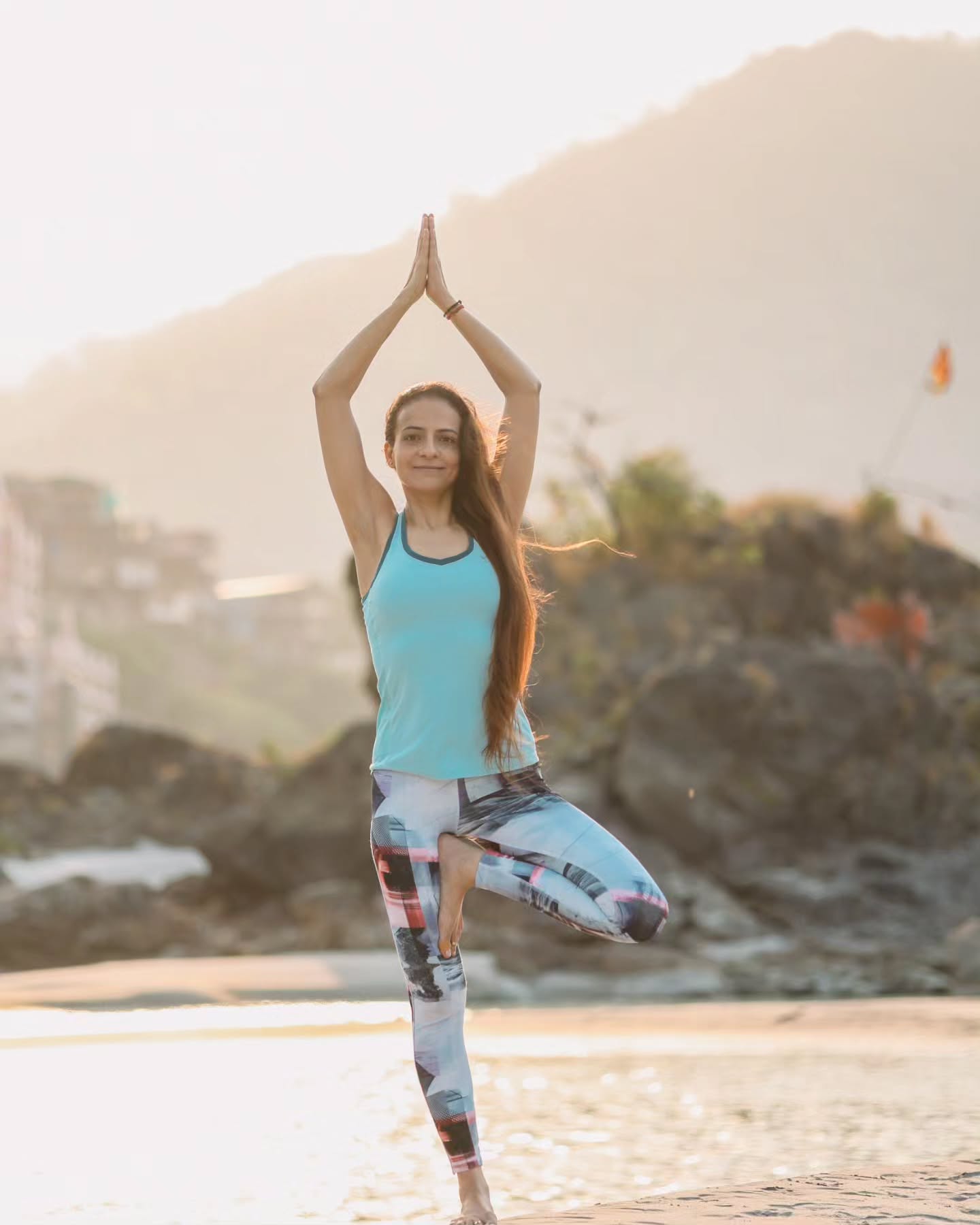Are you tossing and turning at night, struggling to fall asleep, or waking up tired even after a full night in bed? You’re not alone. Millions of people experience poor sleep due to stress, screen time, and a fast-paced lifestyle. The good news is that you don’t need fancy treatments or sleeping pills to get better rest.
One of the simplest and most natural ways to sleep better is yoga — and it only takes 10 minutes a day to make a real difference.
This article will explore how just a short yoga practice before bed can calm your mind, relax your body, and help you sleep more deeply and peacefully.
Why Sleep Matters
Sleep is more than just rest — it’s when your body and mind recharge. Poor sleep affects your memory, mood, focus, immune system, and even your weight. Long-term sleep issues can lead to serious health problems like heart disease, diabetes, and depression.
Common reasons for poor sleep include:
- Stress and anxiety
- Overthinking before bed
- Irregular sleep routines
- Lack of physical activity
- Too much screen time at night
Thankfully, yoga addresses all of these issues.
Can Yoga Really Help You Sleep Better?
Yes! Yoga is more than physical stretching. It connects breath, movement, and mindfulness to create calm and balance in the body and mind.
Several studies and sleep experts have confirmed that yoga can:
- Lower stress hormones like cortisol
- Activate the parasympathetic nervous system (your rest-and-digest mode)
- Slow down your heart rate
- Help release tension from muscles
- Reduce symptoms of insomnia and anxiety
Even 10 minutes of yoga at night can bring your body into a state of relaxation that helps you fall asleep faster and stay asleep longer.
Benefits of 10-Minute Evening Yoga
1. Relaxes the Body
Tight muscles from sitting, working, or stress can make it hard to fall asleep. Gentle yoga helps release tension in the back, shoulders, hips, and legs — making your body feel more comfortable in bed.
2. Quiets the Mind
When you focus on breathing and movement, it’s easier to let go of racing thoughts. Yoga shifts your attention inward, away from worries, helping your mind unwind.
3. Improves Breathing
Yoga includes deep, slow breathing. This sends signals to your nervous system that it’s time to relax, slow down, and prepare for rest.
4. Supports a Healthy Sleep Routine
Doing the same relaxing yoga routine every night can signal to your body that it’s bedtime. This builds a consistent habit and improves your internal clock.

Tips for Practicing Bedtime Yoga
- Time it right: Practice 30–60 minutes before sleep.
- Keep the lights dim: A soft, calm environment helps your brain get into “sleep mode.”
- Use props: Cushions, pillows, or a blanket can make poses more comfortable.
- Breathe slowly: Inhale through your nose, exhale slowly through your mouth or nose.
- Move gently: Avoid fast or intense movements at night.
- Stay off screens: Turn off your phone or switch to airplane mode before you begin.
10-Minute Yoga Routine to Help You Sleep
Here’s a gentle routine designed to calm your body and mind in just 10 minutes. You can do these poses on a yoga mat or even in bed. Hold each pose for 1–2 minutes, breathing slowly and deeply.
1. Seated Forward Fold (Paschimottanasana)
How to Do It:
- Sit with your legs straight in front of you.
- Inhale, lengthen your spine.
- Exhale, gently fold forward from the hips.
- Let your hands rest on your legs or feet.
Benefits: Calms the nervous system, stretches the spine and hamstrings, encourages inward focus.
2. Child’s Pose (Balasana)
How to Do It:
- Kneel on the mat, sit back on your heels.
- Stretch your arms forward and lower your forehead to the floor or bed.
- Breathe deeply.
Benefits: Releases tension in the lower back, hips, and shoulders. Soothing and grounding.
3. Legs Up the Wall (Viparita Karani)
How to Do It:
- Lie on your back with your hips close to a wall.
- Extend your legs up the wall and relax your arms by your sides.
- Close your eyes and breathe.
Benefits: Calms the mind, improves circulation, reduces swelling in legs and feet.
4. Reclined Spinal Twist (Supta Matsyendrasana)
How to Do It:
- Lie on your back and hug your knees to your chest.
- Drop your knees to one side while keeping your shoulders on the floor.
- Extend your arms out to the sides and turn your head gently in the opposite direction.
- Repeat on the other side.
Benefits: Relieves back tension, massages internal organs, aids digestion, and calms the nervous system.
5. Reclining Butterfly Pose (Supta Baddha Konasana)
How to Do It:
- Lie on your back.
- Bring the soles of your feet together and let your knees drop out to the sides.
- Place pillows under your knees if needed.
- Rest your hands on your belly or beside you.
Benefits: Opens the hips and chest, promotes deep relaxation, slows heart rate.
6. Corpse Pose (Savasana)
How to Do It:
- Lie flat on your back with your arms relaxed at your sides, palms facing up.
- Close your eyes and breathe deeply.
- Let go of any tension in the body, starting from your toes up to your head.
Stay here for 2–3 minutes.
Benefits: Deep rest, total relaxation, prepares you for sleep.
Breathing Technique for Better Sleep: 4-7-8 Method
To make your bedtime yoga even more effective, try this simple breathing exercise at the end of your routine:
How to Do the 4-7-8 Breath:
- Inhale through your nose for 4 seconds
- Hold your breath for 7 seconds
- Exhale slowly through your mouth for 8 seconds
- Repeat 4 times
This method slows your breathing, reduces anxiety, and helps your brain shift into sleep mode.
Real-Life Example: Sarah’s Story
Sarah, a 35-year-old office worker, used to lie awake for hours every night. She felt tired during the day and couldn’t focus at work. After reading about bedtime yoga, she started doing a 10-minute routine every night, followed by the 4-7-8 breath.
After a week, Sarah reported falling asleep faster, waking up less during the night, and feeling more rested in the morning. She didn’t change her diet, didn’t take sleep aids — just a few minutes of gentle yoga and breathwork.
You can have the same results.
Common Questions
❓ Can I do yoga in bed?
Yes! Gentle poses like Legs Up the Wall, Reclining Twist, and Butterfly Pose can be done on your bed. Just make sure your mattress is firm enough to support your spine.
❓ What if I’m not flexible?
No problem. Yoga is not about how deep you stretch, but how it makes you feel. Use cushions or modify poses to suit your comfort level.
❓ Should I do yoga every night?
For best results, yes. Even 5–10 minutes a day can improve sleep quality if you’re consistent.
Conclusion
You don’t need to spend hours at the gym or buy expensive sleep aids to sleep better. Just 10 minutes of yoga before bed can calm your body, settle your mind, and prepare you for a good night’s rest.
It’s easy, gentle, and natural — and the benefits can be felt in just a few days. So tonight, instead of scrolling through your phone or worrying about tomorrow, try unrolling your yoga mat and taking 10 quiet minutes for yourself.
Your body — and your sleep — will thank you.



